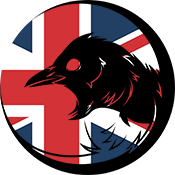 As any of you who have been reading this blog for the past few months may have noticed, this is my first post in English. There will be more in the future, but as I’m mostly using this blog as an exercise to provide reading material for people and as a place to host discussion for language learners, I thought it might be an idea to provide some posts for people who are just starting out learning these languages too. This particular post is going to serve as a sort of introduction, and there will be more coming over the coming months – I might even decide on a day every month to post entries like this. We’ll see. For now, onto the job at hand.
As any of you who have been reading this blog for the past few months may have noticed, this is my first post in English. There will be more in the future, but as I’m mostly using this blog as an exercise to provide reading material for people and as a place to host discussion for language learners, I thought it might be an idea to provide some posts for people who are just starting out learning these languages too. This particular post is going to serve as a sort of introduction, and there will be more coming over the coming months – I might even decide on a day every month to post entries like this. We’ll see. For now, onto the job at hand.
To start off with, it might be helpful to explain a little about how we classify languages, and what a language family is. Most (but my no means all) languages spoken in Europe today are descended from a language called Proto-Indo-European (PIE). As these languages have evolved and become distinct from each other, these branches are classified based on common descendants. For example, the Romance languages (French, Spanish, Italian, Romanian, Portuguese etc.) were all descended from Latin, part of the Italic family of languages spoken all over the Italian peninsula; the Slavic languages (Russian, Polish, Serbo-Croatian, to name but a few) were all descended from Proto-Slavic via Old Church Slavonic; and the Germanic languages (including English, German, Dutch and the Scandinavian languages) were all descended from a hypothetical parent language called Proto-Germanic, before diverging into three separate branches – East Germanic, West Germanic and North Germanic. English, Dutch and German (among others) belong to the West Germanic group. The East Germanic group is now extinct, but included Gothic, Vandalic and Burgundian (though the latter are almost completely unattested). The North Germanic languages were all descended from Old Norse, but can be split up into two further groups – the continental Scandinavian languages (Danish, Swedish and Norwegian), and a second group containing Icelandic and Faroese. As Danish, Swedish and Norwegian are very close to one another geographically, perhaps it isn’t surprising that they have followed a similar evolutionary path and as such can mostly be mutually understood by speakers of all three languages. That’s what makes these languages so great for aspiring polyglots – it’s a three for one deal!
When it comes to learning these languages, I often say to people that Swedish is the one to go for. It’s spoken by more people than the other two, and it’s probably the easiest to learn; Danish has a difficult accent for learners to deal with, and Norwegian has such a broad spectrum of dialects… if I start talking about Norwegian dialects, we’ll be here all day. So I’m going to just gloss over it and move on, for now at least.
Alright, I got into a little more detail than I had intended; so I’m going to use this time at the end of the post to actually teach you some Scandinavian! In the table below, you’ll find some survival phrases in all three languages with a translation in English. I’m afraid they’re pretty basic, and there’s no guide for pronunciation but I’ll come on to that in a later post from this series. But this should be useful for showing you just how similar the three Scandinavian languages are.

I think you’ll notice that Swedish is a little different from the other two, but written Danish and Norwegian are almost identical – that’s due to their shared history, and I’ll be writing about that in more detail in a future post.
So that’s it for now – please let me know if you’d be interested in seeing more of this series, or if there’s one of the three languages you’d especially like to see more detail on. I’ve got some stuff planned for the coming months but obviously that can be changed or altered based on what you guys want to see. Next time I think I’ll be talking about verb conjugation and teaching you how to introduce yourself in all three Scandinavian languages. As always, thank you for reading, and I’ll see you next time.
– J.
Scandinavian for beginners, part 1 / 2 / 3.


Stumbling upon your blog is really cool! I just started learning basic swedish through duolingo and i’m really getting the hang of it! Cheers!
LikeLiked by 1 person
Oh that’s great to hear! Good luck with the Swedish!
LikeLike